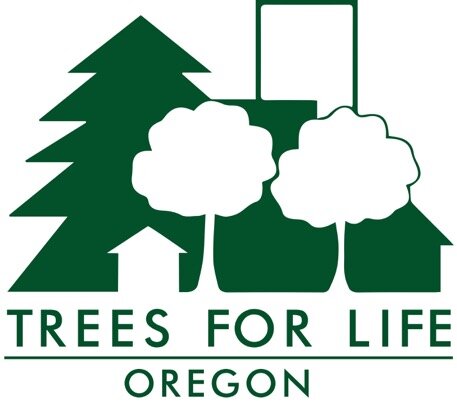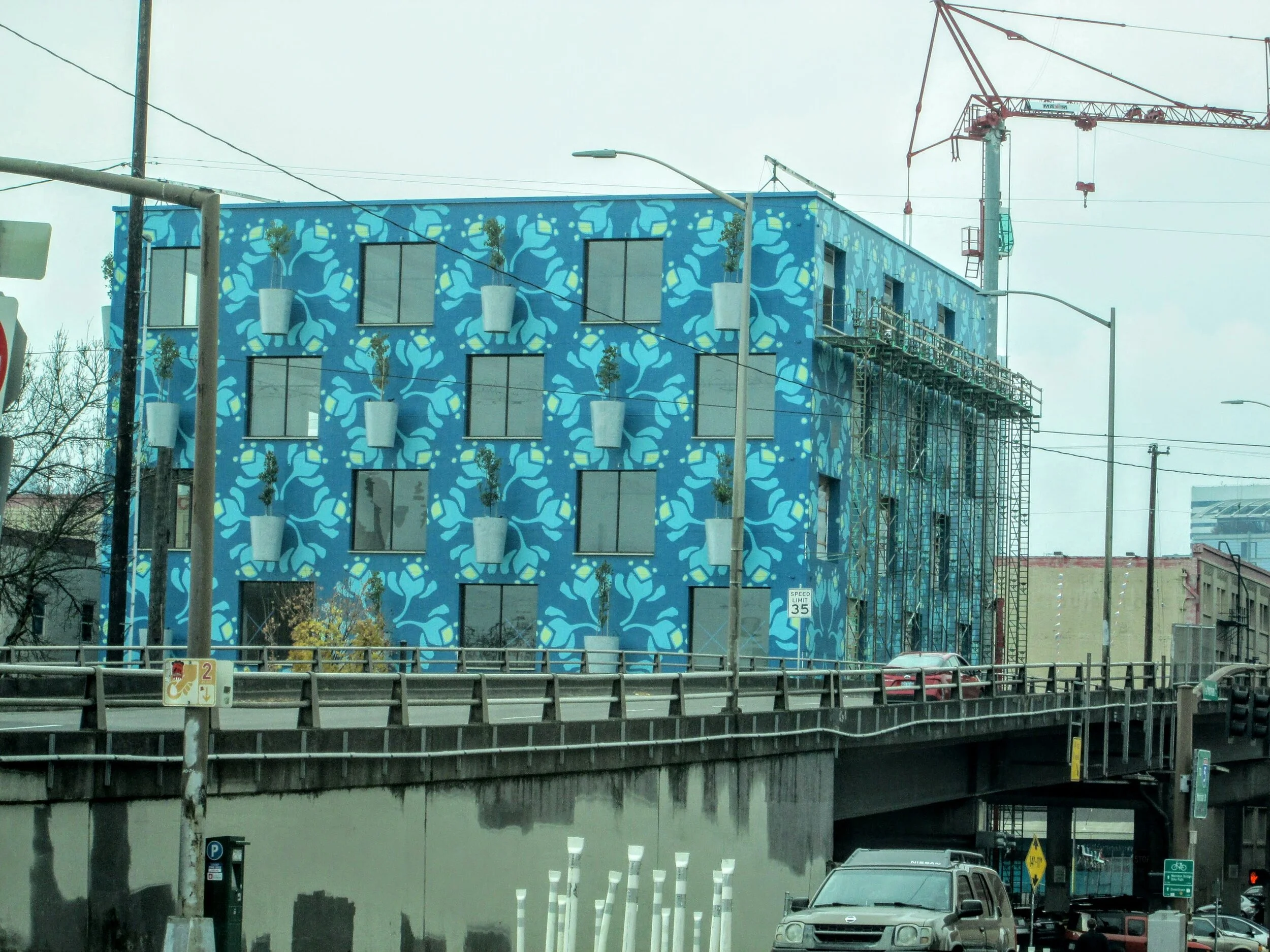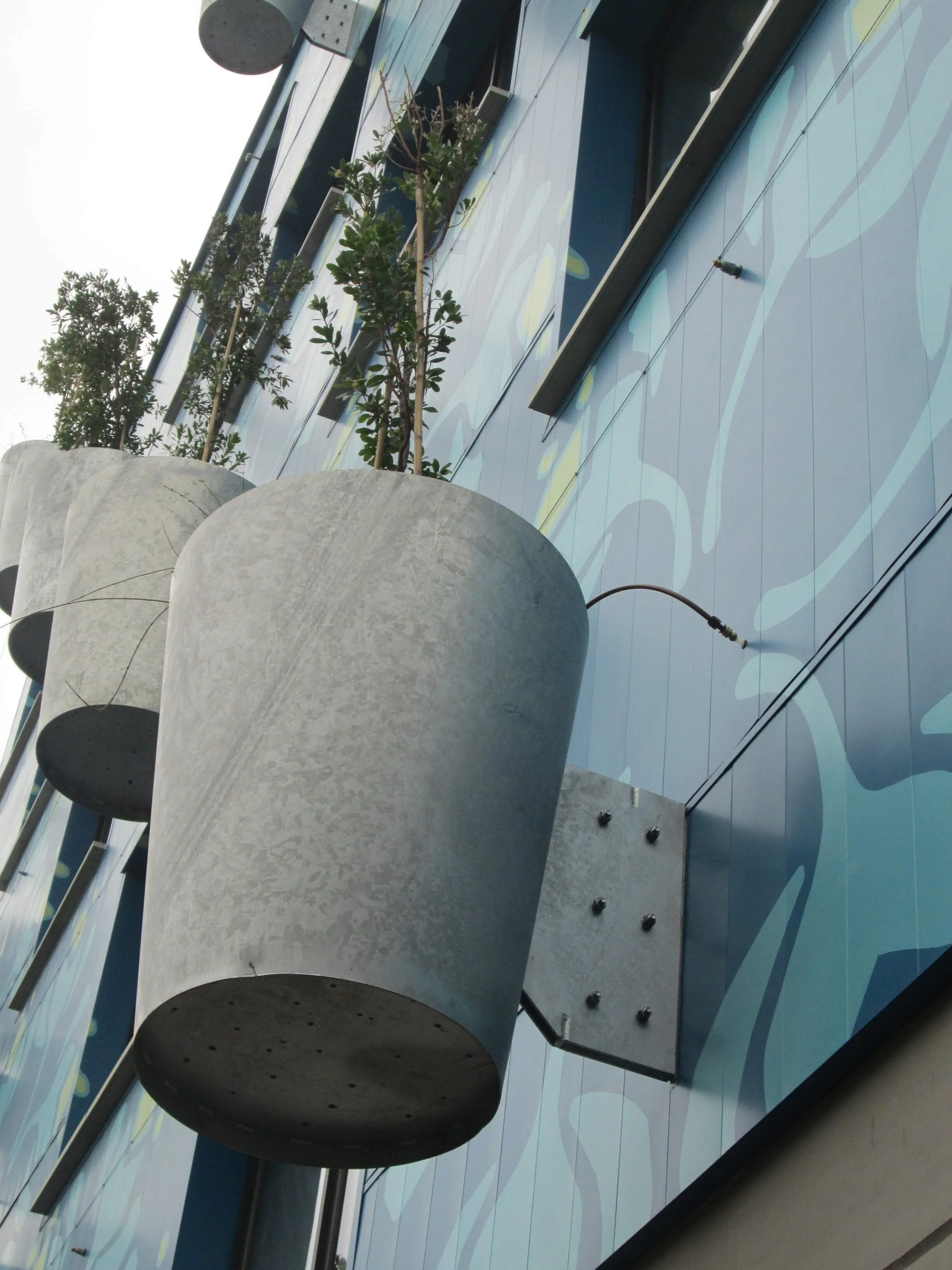Ben Carr of Brett Schulz Architect
A Designing for Trees Feature By Kyna Rubin
Trees For Life Oregon showcases the creativity and thought processes of developers and architects who are taking the time to design buildings with trees in mind. Their work, which preserves or creates space for trees, illustrates that new development and trees need not be mutually exclusive
November 21, 2019
Whether designing for new trees in the air or for a beloved old tree anchoring a building site, architect Ben Carr is going the distance to make room for trees, which he believes have "iconic” importance in Portland.
Incorporating trees into building design is something “we should all be doing more of,” says Carr.
The Tree Farm from SE Morrison and SE Grand.
Photo: Trees for Life Oregon
Jutting up against the south side of the Morrison Bridge ramp between SE 3rd Avenue and MLK, the nearly finished six-story office building seems an unlikely spot for growing trees. Indeed, the site will only accommodate two small-form street trees. The site designers had hoped for three trees along SE 3rd, says architect Ben Carr of Brett Schulz Architect, who worked on the project with owner Guerrilla Development. The third tree blocked a stop sign so had to be ditched.
But look skyward from the street and you’ll see something unique for Portland. Secured to the sides of the building are trees housed in cantilevered planters that, from a distance, appear to be floating between the windows. Each pot is five-feet tall and four-feet in diameter at the top, tapering to three-feet at the base. In all, the 56 planter-based trees will likely provide a greater volume of environmental services including passive cooling for the building surface than will the two street-level bay laurels (Laurus nobilis) planned for 3rd Avenue. The Morrison Avenue side to the north is under the bridge, and can’t accommodate street-level trees, says Carr. The tree planters there won’t be used until the third floor, which is above the bridge ramp.
Photo: Trees for Life Oregon
The development, called The Tree Farm, will be a bit of an antidote to pollution emitted by the 50,000 cars a day that cross Morrison Bridge, many heading to nearby I-5. “In a small way”, says Carr, “we are helping with the carbon offset by adding 56 trees on a site that would generally have zero.”
The idea for the suspended trees came from Guerrilla Development owner Kevin Cavenaugh, according to Guerrilla’s project manager, Westin Glass. (Watch this page for an upcoming focus on how and why Guerrilla Development designs for trees.)
Incorporating trees into building design is something “we should all be doing more of,” says Carr. The benefit of nature in the city is clear to him. “It’s something I didn’t think I needed to be proactive about, but I realize that so much that gets built these days is just following code verbatim and doing the bare minimum to meet code.” Carr points to much more ambitious projects around the world such as Stefano Boeri Architetti's vertical forest in Milan as inspiration for what can be done.
The 56 trees hovering from the square building will be the same species on all four sides because the property developer, Guerilla Development, wanted them to have a consistent look, says Carr. The challenge was finding one species that could withstand sun, shade, high winds, car fumes, and a constrained planter environment. The winner? Advised by Cistus Nursery’s Sean Hogan, the team selected the strawberry tree, Arbutus unedo. Its tough evergreen foliage can take a harsh urban milieu and will drop less debris than a deciduous tree. Carr designed the planters based on Hogan’s input on the volume of soil the trees require to thrive.
Photo: Brett Schulz Architecture
The strawberry tree is named for its edible fruit. The trees were flowering in early November, something Carr noticed while watching a crane lift the first trees and planters into position. That day, two workers repelled down the side of the building to connect the planter irrigation lines and install the bolts that fasten the planters to the structure.
Carr and his firm hired a fire protection engineer to figure out how to protect the trees and the building. The site permitting process happened to take place just as ash from the Eagle Creek fire was darkening Portland skies in 2017. There’s nothing in the building code that says if you have a tree hanging off your building sixty feet off the ground you need an irrigation head that provides drip irrigation to each tree, says Carr. Or that you need a separate system of wires across the building that will trigger a sprinkler head to douse the exterior if the wires melt. But his team took these extra steps to placate the parties concerned.
“It’s such a massive tree,” says Carr, that his own team “couldn’t stomach” taking it down.
Saved Western redcedar at N. Holman and N. Montana. Photo: Trees for Life Oregon
The Tree Farm may not be as replicable, practical, or desirable as other approaches to designing for trees, but another of Carr’s projects, two three-story apartments at the southeast corner of N. Holman and N. Montana, will be. This development in residential Arbor Lodge is scheduled to break ground in January and be completed by fall 2020. What makes this project unusual is that Carr worked with the developer, SAMS Development, to preserve a large native Western redcedar standing at the site’s prominent corner.
Usually, says Carr, by the time his firm comes onto a project the developer has already made the decision to keep or tear down trees. In this case the developer hadn’t yet determined what to do. “It’s such a massive tree,” says Carr, that his own team “couldn’t stomach” taking it down.
Rendering of future development with preserved Western redcedar. Courtesy of Brett Schulz Architect
Carr went back and forth with the developer to see if they could agree on a design that would preserve the number of apartments the company needed to make the project pencil out while also preserving the tree. That process yielded a win-win.
The Western redcedar is a neighborhood landmark, Carr discovered, when, after he posted a job site photo on Instagram, his team received comments from local residents thanking them for saving the tree.
Importantly, Carr’s team includes an arborist who will advise on ways to protect the tree during construction. The goal of the whole team, he says, is “to save that tree.”
Developers can make more money by demolishing a tree on a valuable corner in order to construct a larger building. But these days Carr thinks that developers “realize there’s an intangible quality, an advantage to having voluntarily provided extra outdoor space for tenants.”





